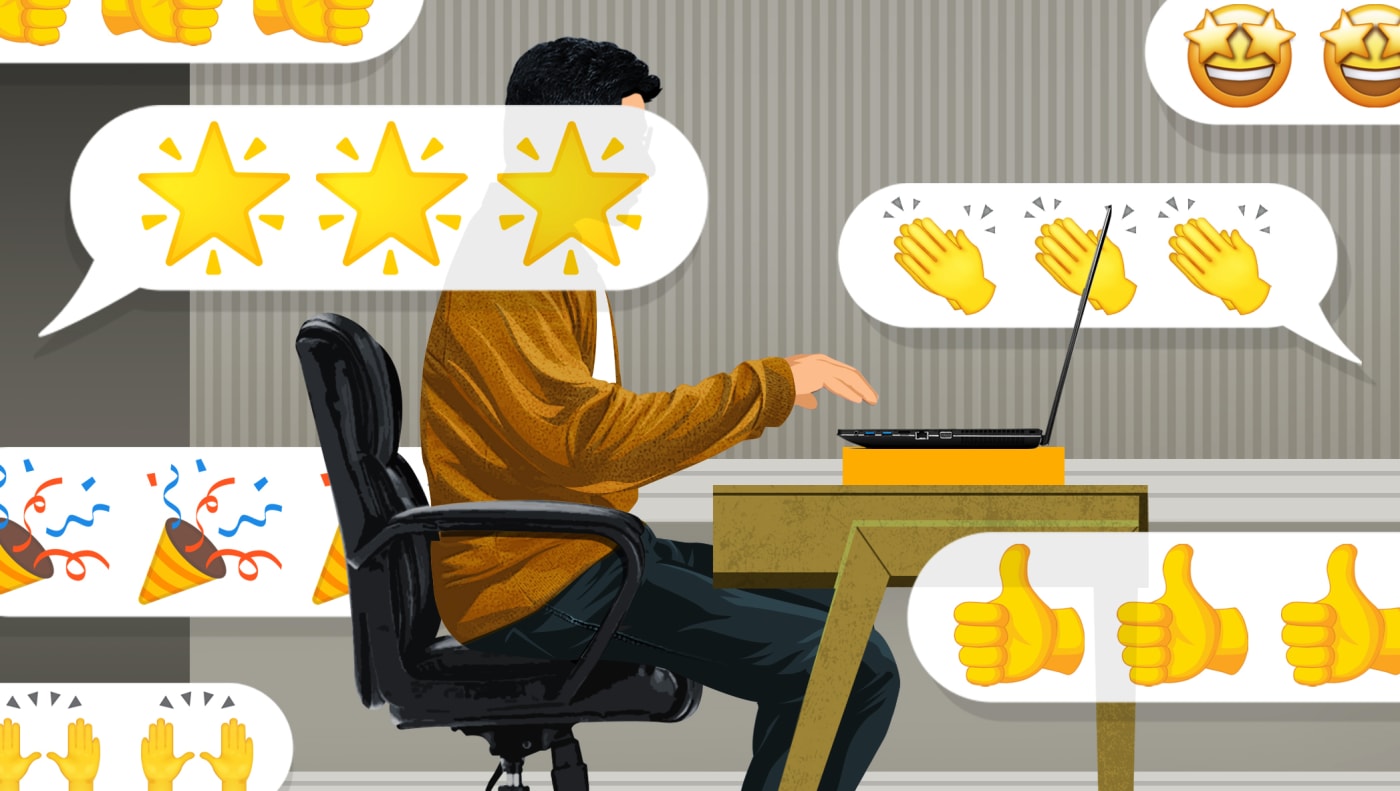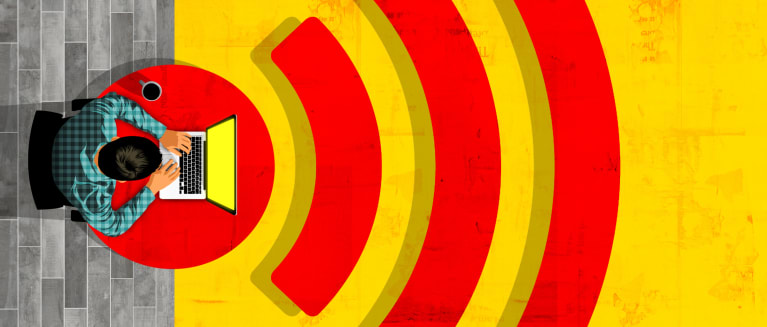How the Coronavirus Pandemic Will Change the Way We Work
HR professionals help their organizations adapt.
While many HR professionals have toiled through difficult times before, the rapid global spread of the novel coronavirus has brought a troubling new twist.
Unlike a flood or a tornado, the virus doesn’t hit once and go away. It lingers, leaving business leaders and employees uncertain about their next steps.
That uncertainty “absolutely makes HR’s job harder,” says Steve Pascot, leader of the HR practice at Spencer Stuart, an executive search and consulting firm in Chicago.
At the same time, the COVID-19 pandemic has elevated the importance of HR professionals within organizations as never before. HR practitioners no longer need to convince business leaders to consult with them on key decisions. Those leaders are now coming to them, often on a daily basis.
“This is HR’s leadership moment,” Pascot says.
Angela Colon-Mahoney, head of North American HR at Otsuka Pharmaceutical Cos., has discussed how to cut costs and avoid layoffs with colleagues in the legal, government affairs and finance departments. The New Jersey-based company has 3,000 North American employees.
“We’ve become about the preservation of the employee,” she says, adding that the company is ferreting out waste and inefficiencies while also rethinking all purchases and projects.
Colon-Mahoney is one of many HR professionals playing critical roles in their organizations.
“We ushered our workforces into a COVID-19 world of telework, virtual meetings, and, unfortunately, furloughs and layoffs, and we’re the ones who will put our workplaces back together,” says Johnny C. Taylor, Jr., SHRM-SCP, president and chief executive officer of the Society for Human Resource Management. “CEOs are counting on our speed, our expertise and our creativity in reshaping the workplace for resistance and recovery.”
To assist HR professionals in a post-coronavirus world, we asked HR practitioners and other experts what lessons have been learned during the pandemic and what lasting impacts it will have on the way we work. From remote work to health benefits, employee morale to disaster planning, HR professionals are determined to help their organizations forge a new way forward. —Theresa Agovino

Communications:
Bolstering Company Morale
During the peak of the pandemic, Sarah Comstock sent employees tips for teaching their children at home, methods for coping with loneliness and guidelines for scheduling a virtual doctor’s appointment.
The resources were aimed at helping employees deal with the new normal, says Comstock, executive director of corporate communications at Ally Financial Inc. in Detroit.
For similar reasons, Cheetah Technologies Inc., which supplies food to mom-and-pop restaurants in San Francisco, sent its 200 employees sales updates that had previously been shared only with managers, says Lisa Chui, director of human resources.
Providing all staff members with a closer look at how the company was managing the situation created a sense of community and provided reassurance that things were under control, she says.
As the virus spread across the country, HR professionals at many organizations teamed up with business leaders and communications experts to try to bring some calm to an anxious workforce and boost morale. Employees worried about their family’s health, how long they would have jobs and whether they could pay their bills.
“It’s important to broadcast wins because there is a lot of uncertainty with the economy and possible layoffs,” Chui says. “HR also needs to be as honest as it can be about the possibility of layoffs.”
If there are layoffs, HR professionals need to rally around the remaining staff members and make them feel valued, she adds.
A Human Touch
The COVID-19 pandemic has forced HR professionals to rethink the way they communicate with employees.
Some organizations offered clear, concise and continual communication that helped employees feel more prepared than panicked.
But other employers were slow to respond and didn’t provide enough specific guidance to reassure employees, says Carla Bevins, assistant teaching professor of business communication at Carnegie Mellon University’s Tepper School of Business. Their employees were left feeling confused, disconnected and ignored, she says.
2 in 3 employers say maintaining employee morale is a challenge.
In times of crisis, the best HR professionals and managers maintain personal contact with individual employees, whether those employees are working from home or providing essential services onsite, says Kyra Sutton, assistant teaching professor at Rutgers University’s School of Management and Labor Relations. That’s a good practice to carry forward after the pandemic threat has ended.
“You want to know what’s happening in each of your employee’s lives,” she says. “If you never did one-on-one meetings before, this might be a good time to start.”
If individual meetings aren’t possible, e-mail staff to ask if they have any specific concerns or challenges to get a high-level understanding of what the team is dealing with, says Neil Gordon, a communications expert and speaking coach in Santa Monica, Calif. Employees want to know they are being heard.
Show Appreciation
Expressing gratitude to employees boosts morale and helps them endure during difficult times.
“I think employees need to hear a ‘thank you’ for the work they completed in the midst of the crisis,” Sutton says.
After the threat has diminished, take time once again to recognize and celebrate employees’ extra effort, Sutton advises. Show appreciation for what they accomplished together as a team despite the challenges of working during the health threat, she says.
HR professionals should understand that employee anxiety won’t disappear overnight.
“It will be quite some time before we’re shaking hands again or will feel really comfortable in the proximity of each other,” Bevins says.
One of the upsides of the pandemic is that it has forced HR professionals and managers to bring more humanity to the workplace, says Laura Mazzullo, owner of East Side Staffing, an HR recruiting firm in New York City.
During a global crisis, “we are all feeling afraid, vulnerable and anxious together,” Mazzullo says. “This requires the walls or guards we often put up to come down. HR professionals, especially, are so used to feeling like they have to be ‘on,’ as we often define ‘professional’ as being ‘polished’ and ‘buttoned-up,’ but I think this will change.”
It will be harder for HR to go back to the “old-school mentality,” Mazzullo says. She envisions HR providing customized work environments for employees who either want to continue to work from home or prefer to come back to the office.
“I can’t imagine we would go back to exactly where we left off before,” Mazzullo says.
Lisa Rabasca Roepe is a freelance writer based in the Washington, D.C., area.

Remote Work:
A Nationwide Experiment
Robots are the heavy lifters at Ocado, a British online grocer that delivers meat, produce and other supermarket goods to customers’ homes quickly with a minimum of human contact. It’s a high-tech outfit that’s well-suited for a post-coronavirus world where preventing another pandemic is a priority.
But when the crisis hit the U.S. this spring, the human piece of Ocado’s futuristic operation threatened to disrupt the company’s ambitious plan to partner with Kroger to open 20 new U.S. warehouses in the next few years.
Travel restrictions and the need for social distancing forced Ocado to rethink sending dozens of its newly hired, U.S.-based engineers to the U.K. for three months of hands-on robotics training, says Jocelyn King, the company’s vice president of human resources in North America, who is based in McLean, Va.
Ultimately, employees received their training stateside via live and recorded video, virtual and augmented reality, and other high-tech distance-learning methods.
Silver linings are difficult to find amid the widespread devastation caused by the coronavirus. At Ocado, the move to remote training has the potential to be a win-win for the company and its workers, cutting travel costs and possibly reducing disruption to employees’ lives in the future, King says. Other companies are similarly switching from hands-on to computerized hiring, onboarding and performance management during the crisis.
“As terrible as this situation has been, it has provided us with an additional opportunity to meet with our business partners and consider things we never would have considered,” says King, who notes that it could improve how the company conducts HR functions and other business in the future.
Staying Connected
While the pandemic forced most HR professionals to find creative solutions for getting work done remotely, it has been a particular challenge for organizations with cultures and work processes built around face-to-face contact.
Before California Gov. Gavin Newsom issued a statewide shelter-in-place order in March, Pablo Pineda, a labor relations manager for a large, unionized defense supply manufacturer in Sunnyvale, spent several hours on the plant floor each day checking in on workers and attempting to resolve small problems before they erupted into full-fledged labor disputes.
After Newsom’s order, factory workers were still reporting to the plant but Pineda was required to work from home. So he made do with the technology at hand, spending most of his time on the phone and answering e-mails from employees who had questions about leave policies, quarantines, shelter-in-place orders and other issues.
71% of employers say adapting to remote work has been a challenge.
conducted April 1-8, 2020.
“I’m focused on trying to reassure our workforce that everything is fine and that the company is listening and paying attention to their concerns,” he says.
Before the pandemic, about 25 percent of U.S. employees worked from home at least occasionally and 15 percent had regularly scheduled work-at-home days, according to the U.S. Bureau of Labor Statistics. In a survey by researchers at the Massachusetts Institute of Technology in April, 34 percent of 25,000 respondents had switched from onsite to offsite work.
Employees at Plus3 IT Systems, a cloud computing company in Reston, Va., have had the go-ahead to work from home for years, but most have opted to spend at least some time in the office, says Jeanine Callahan, vice president for corporate operations.
“We are actually a team that likes to be together,” Callahan says, adding that team members missed each other after the pandemic forced them to work from home full time.
To help maintain an esprit de corps, she said, she asked all employees to share their video feed during online meetings and ramped up use of social media platforms such as Slack for instant messaging.
Though the adjustment to remote work was hard for employees, Callahan wonders if the office will ever return to the way it once was. Even if the pressure to avoid human contact lets up, “I think there’s a good chance that my team will work very differently,” she says.
Going Forward
The pandemic forced a nationwide experiment with remote work. Now that business leaders have seen it can be done, some experts predict that remote work will continue on a broader scale than ever before. Here are some tips to help smooth the transition going forward:
Don’t lose the personal touch. At Plus3 IT Systems, an employee experience coordinator helps keep workers engaged by using social media to host informal chats, trivia games and even a cooking channel for employees.
Be flexible with technology. If you can’t do things the old way, King says, “be open to new technologies that support creative, collaborative and effective virtual processes.”
Apply rules consistently and fairly. Be mindful that telework policies that have a negative or disparate impact on legally protected groups such as women or racial minorities can increase your exposure to discrimination claims.
Rita Zeidner is a freelance writer based in Falls Church, Va.

Employee Benefits:
Changing With the Times
When millions of people lost their jobs in a matter of weeks this spring, businesses and their remaining workers were fundamentally affected. In this evolving new world filled with uncertainty and change, how can employers make sure they offer the benefits employees need while also operating within new budgetary constraints?
These four actions can help.
Take stock and reassess. Given the economic fallout of the coronavirus, many businesses lost revenue and were forced to reduce headcount. As the economy recovers, many are likely to hire more part-time employees and contractors. Job sharing and reduced hours are also likely. These tactics will have a tremendous impact on benefits decision-making.
“Many organizations are going to have to reorganize benefits post-COVID-19,” says Cecelia Harris, senior HR consultant with ARC Human Capital in Vienna, Va.
Once employers take stock of where they stand now, they’ll need to determine what the organization will require as it moves beyond the pandemic.
“What will the business look like in six months?” Harris asks.
Companies will have to determine how many workers they’ll need and what skills and expertise will be important. This will help guide decisions on employee benefits.
Gemmy Industries Corp., a consumer products company with 94 employees, maintains a range of onsite benefits, including a gym, CrossFit training classes, and free and subsidized meals.
“If people elect to work from home in the future, allowing the company to maintain a smaller office space, that will change our need for benefits onsite,” says Kim Pisciotta, SHRM-CP, the Coppell, Texas-based company’s director of human resources. In this scenario, the company might invest more in remote learning, hold online social hours to help keep team members connected and find ways to deliver benefits to employees’ homes.
Prepare workers for 2021. Employers will soon be getting a sense of benefits costs for 2021 and should start preparing employees now for any changes. These might include lower employer contributions to retirement and health plans, or modifications to health insurance, including changes to provider networks and prescription drug formularies to keep costs down.
“Employees need to understand that [the company] saving money can help them keep their jobs over the long term,” says Trina White, SHRM-CP, vice president of human resources for HealthRIGHT 360, which provides health care services across California.
Identify new employee priorities. The pandemic could be causing financial stress for many employees, while others may be dealing with the trauma of sickness and death in their families and communities. As a result, more workers are likely to embrace programs that support their physical, emotional and financial wellness.
83% of employers say they’re adjusting their business practices in light of the pandemic.
Of those, 32% are offering additional paid leave for employees, while another 18% are considering it.
“There is likely to be more demand for employee assistance programs and mental health benefits,” says Portage, Mich.-based consultant Gary Kushner. “What are sufficient benefits in a disaster situation where large numbers of people have been dealing with depression and loneliness?”
With many people relying on virtual health services during the pandemic, telehealth benefits may gain popularity in the future.
“Employers should ask employees to rate the effectiveness of telehealth and their experience using it during the pandemic,” Kushner says. “Did they get their questions answered? Was the diagnosis and treatment effective? Did the employees get the results they had hoped for?”
Learn from the past and prepare for the future. In the wake of furloughs, layoffs and reduced work hours, leaders in some organizations have looked for ways to help employees maintain health insurance coverage.
Going forward into an uncertain future, companies should formalize what they’re willing and able to do for employees during these types of events. Will carriers allow employers to keep people on their health plans following a furlough? Can the employer conduct a modified open enrollment so workers can switch to a less expensive plan, add or adjust dependents, and make other changes to their health plan choices?
“Most plan documents don’t have any language to deal with these situations,” says Dawn Craig, SHRM-CP, director of HR and compliance with Clarus Benefits Group in the Houston area.
This is also the time to prepare for unanticipated events by including critical HR functions and employee benefits programs in business-continuity and emergency-response plans, says Tami Simon, senior vice president at consulting firm Segal in Washington, D.C.
The key is to understand how the organization would manage benefits under various scenarios, such as a continuation of the coronavirus, a new pandemic, a cyberattack or disruptions to utility grids. Let lessons from the past be your guide going forward.
Joanne Sammer is a New Jersey- based business and financial writer.

Disaster Preparedness:
Take It Seriously
Kimberly Cassady has dealt with earthquakes, wildfires, hurricanes and tsunami warnings in her position as chief talent officer at Cornerstone OnDemand, and the company has learned to adjust its disaster-preparedness playbook accordingly.
“With each crisis, we learn something new,” Cassady says, adding that the company turned to its previous disaster-preparedness plans to help it respond to COVID-19. “We’ll probably draw more on this experience to improve how we’re handling things.”
Cornerstone OnDemand is based in Santa Monica, Calif., and offers cloud-based talent management systems from offices around the world. When parts of Asia went on lockdown because of the virus, Cassady says, the company got an early look at what it was like to operate with a completely remote workforce.
One key takeaway was the need for “quick, early communication to employees, even if we don’t have all the answers,” she says.
Almost 2/3 of employers had an emergency preparedness plan prior to the pandemic.
But of those, more than half failed to cover communicable diseases.
While no two disasters are alike, having a response plan in place makes it easier to cope when emergencies arise, according to experts.
Dealing with COVID-19 will give disaster-preparedness and business-continuity planning “a new level of seriousness for all organizations,” says Chloe Demrovsky, president and CEO of the nonprofit Disaster Recovery Institute International.
“Those implementing pre-existing plans were really ahead of the game,” says Susan Bickley, a labor and employment attorney with Blank Rome.
Be Proactive
Vivian Page, executive vice president of people and technology at Talking Rain Beverage Co., which makes sparkling waters, says the company has been proactive in preparing for disasters.
As a beverage maker, “this is part of our daily life, to protect the product we put out,” she says.
After hearing the news reports about the lockdown in northern Italy because of COVID-19, Page says she realized it could happen here as well, and the Preston, Wash.-based company began to prepare.
Talking Rain was already working with AlertMedia, which can send out text messages to an entire workforce, and last year the beverage maker began increasing its focus on remote work, issuing employees laptops that they could use at home.
To support collaboration, the company introduced Microsoft Teams as a means of communication. By the time the company switched to full remote work because of the pandemic, “we hit the ground running,” Page says. “Everyone was very familiar with how to use it.”
Talking Rain also gave each employee a $100 allowance to buy items to help them work from home, which might be anything from a new keyboard to office snacks.
At Cornerstone, Cassady found team meetings were shorter when held virtually, and the company encouraged employees to spend the extra time with their children, who were also at home with schools closed.
Cornerstone also worked to support a sense of community among employees, organizing virtual coffee breaks and happy hours.
From her work with employers, Bickley has heard “how important it is to have a strong corporate culture to bind them together in difficult times.”
Make a Plan
Those organizations that didn’t have an emergency-preparedness or business-continuity plan in place before the pandemic hit will probably see the benefit of having one now. Demrovsky suggests these steps to begin:
1. Determine the organization’s goals. Gather priorities from senior leaders, such as the chief executive officer and the board of directors, with a steering committee made up of representatives from the HR, finance, IT and legal teams. Assign someone to be the organization’s business-continuity planner; this individual will prepare the plan, update it and test it regularly.
2. Identify the current or potential risks. What could happen that would adversely affect your organization? Assess those risks to determine the potential impact to your organization.
3. Prioritize the organization’s key functions and processes. Which ones will have the greatest effect if they aren’t available? Identify gaps between what’s needed to continue service levels with minimal disruption and your organization’s current ability to deliver on those needs.
4. Decide on a plan of action. Develop practical, cost-effective strategies to reduce the deficiencies identified.
Susan Ladika is a freelance writer based in Tampa, Fla.
Illustrations by Taylor Callery.


